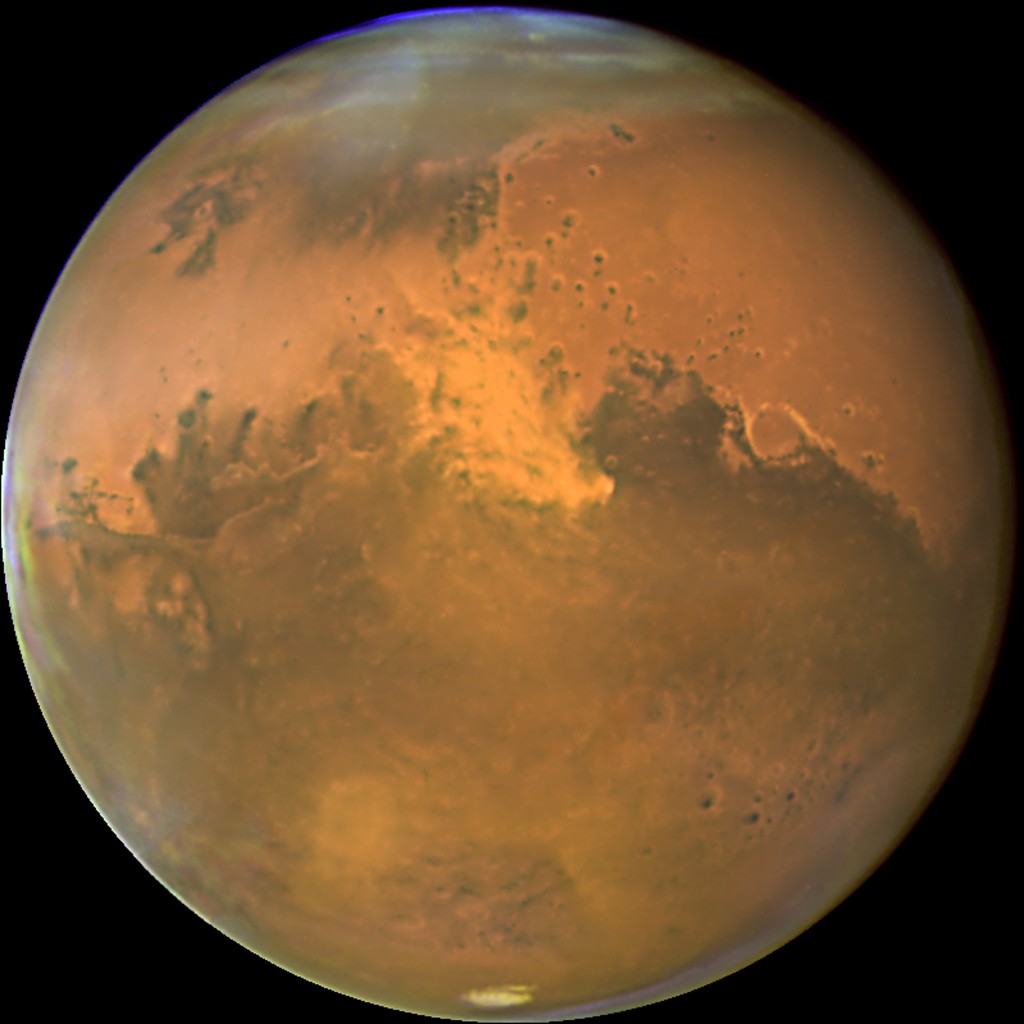
WASHINGTON, United States (AFP) –Mars and Earth got unusually cozy Monday night, drawing closer to each other than they have in more than a decade.
The two planets passed at 120.7 million kilometers (75 million miles) away from each other, which NASA said will not happen again until July 31, 2018.
The average distance between Earth and Mars is 225 million kilometers (140 million miles), with the neighboring planets sometimes reaching distances as far as 402.3 million kilometers (250 million miles) when they are diametrically opposite the Sun.
The last time Mars and Earth came this close was in 2005.
In 2003, the celestial bodies were within 56.3 million kilometers (35 million miles) — the nearest they had been in 60,000 years.
Stargazers will have to wait until 2287 to see Mars at that distance again, according to NASA.
Mars has shone particularly bright since mid-May, as it approached and aligned with the Earth and the Sun.
The Red Planet will stay big and bright through mid-June, after which its intensity will diminish.
js/mdo/sg
© 1994-2016 Agence France-Presse







